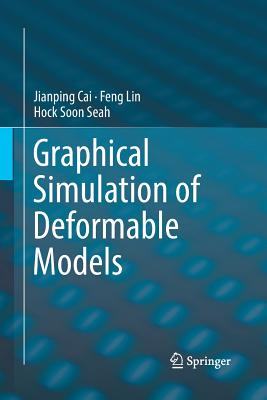Graphical Simulation of Deformable Models
暫譯: 可變形模型的圖形模擬
Cai, Jianping, Lin, Feng, Seah, Hock Soon
- 出版商: Springer
- 出版日期: 2018-07-07
- 售價: $4,600
- 貴賓價: 9.5 折 $4,370
- 語言: 英文
- 頁數: 107
- 裝訂: Quality Paper - also called trade paper
- ISBN: 3319845497
- ISBN-13: 9783319845494
海外代購書籍(需單獨結帳)
相關主題
商品描述
This book covers dynamic simulation of deformable objects, which is one of the most challenging tasks in computer graphics and visualization. It focuses on the simulation of deformable models with anisotropic materials, one of the less common approaches in the existing research. Both physically-based and geometrically-based approaches are examined.
The authors start with transversely isotropic materials for the simulation of deformable objects with fibrous structures. Next, they introduce a fiber-field incorporated corotational finite element model (CLFEM) that works directly with a constitutive model of transversely isotropic material. A smooth fiber-field is used to establish the local frames for each element.
To introduce deformation simulation for orthotropic materials, an orthotropic deformation controlling frame-field is conceptualized and a frame construction tool is developed for users to define the desired material properties. The orthotropic frame-field is coupled with the CLFEM model to complete an orthotropic deformable model.
Finally, the authors present an integrated real-time system for animation of skeletal characters with anisotropic tissues. To solve the problems of volume distortion and high computational costs, a strain-based PBD framework for skeletal animation is explained; natural secondary motion of soft tissues is another benefit.
The book is written for those researchers who would like to develop their own algorithms. The key mathematical and computational concepts are presented together with illustrations and working examples. It can also be used as a reference book for graduate students and senior undergraduates in the areas of computer graphics, computer animation, and virtual reality. Academics, researchers, and professionals will find this to be an exceptional resource.
The authors start with transversely isotropic materials for the simulation of deformable objects with fibrous structures. Next, they introduce a fiber-field incorporated corotational finite element model (CLFEM) that works directly with a constitutive model of transversely isotropic material. A smooth fiber-field is used to establish the local frames for each element.
To introduce deformation simulation for orthotropic materials, an orthotropic deformation controlling frame-field is conceptualized and a frame construction tool is developed for users to define the desired material properties. The orthotropic frame-field is coupled with the CLFEM model to complete an orthotropic deformable model.
Finally, the authors present an integrated real-time system for animation of skeletal characters with anisotropic tissues. To solve the problems of volume distortion and high computational costs, a strain-based PBD framework for skeletal animation is explained; natural secondary motion of soft tissues is another benefit.
The book is written for those researchers who would like to develop their own algorithms. The key mathematical and computational concepts are presented together with illustrations and working examples. It can also be used as a reference book for graduate students and senior undergraduates in the areas of computer graphics, computer animation, and virtual reality. Academics, researchers, and professionals will find this to be an exceptional resource.
商品描述(中文翻譯)
本書涵蓋了可變形物體的動態模擬,這是計算機圖形學和可視化中最具挑戰性的任務之一。它專注於具有各向異性材料的可變形模型的模擬,這是現有研究中較不常見的方法。書中探討了基於物理的和基於幾何的兩種方法。
作者首先從橫向各向同性材料開始,模擬具有纖維結構的可變形物體。接著,他們介紹了一種纖維場結合的共變有限元素模型(CLFEM),該模型直接與橫向各向同性材料的本構模型一起工作。使用平滑的纖維場來建立每個元素的局部框架。
為了引入正交各向異性材料的變形模擬,概念化了一個正交各向異性變形控制框架場,並為用戶開發了一個框架構建工具,以定義所需的材料特性。正交各向異性框架場與CLFEM模型結合,以完成正交各向異性可變形模型。
最後,作者提出了一個集成的實時系統,用於具有各向異性組織的骨骼角色動畫。為了解決體積失真和高計算成本的問題,解釋了一種基於應變的PBD框架,用於骨骼動畫;軟組織的自然次級運動是另一個好處。
本書是為那些希望開發自己算法的研究人員而寫的。關鍵的數學和計算概念與插圖和實例一起呈現。它也可以作為計算機圖形學、計算機動畫和虛擬現實領域的研究生和高年級本科生的參考書。學術界、研究人員和專業人士將會發現這是一本卓越的資源。































